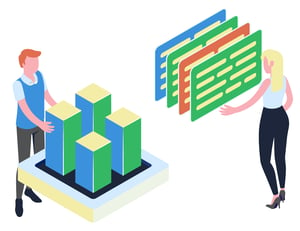White Paper
Designing Data Applications The Right Way

As data grows in volume and complexity, a manual approach is often unsustainable and too prone to errors. From there, automated processes and "data applications" come into play. So what's the best way to design data applications? What is a data integration layer and how do you make the most of it?
In this white paper, we discuss the architecture to aim for when designing data applications, recommending a three-layer separation: the front-end application or applications, data storage (typically many disparate ones), and data integration sandwiched in between.
Utilizing the power of a data integration platform, organizations can future-proof towards large data volumes and complexity by:
- Automating and handling business logic in a separated layer, instead of doing ad hoc manual processes
- Properly managing the data lifecycle to better react to changes
- Automating data quality
These types of applications are more flexible, allowing businesses to respond quickly to typical data management issues caused by fast‑changing requirements in growing and unstructured environments.